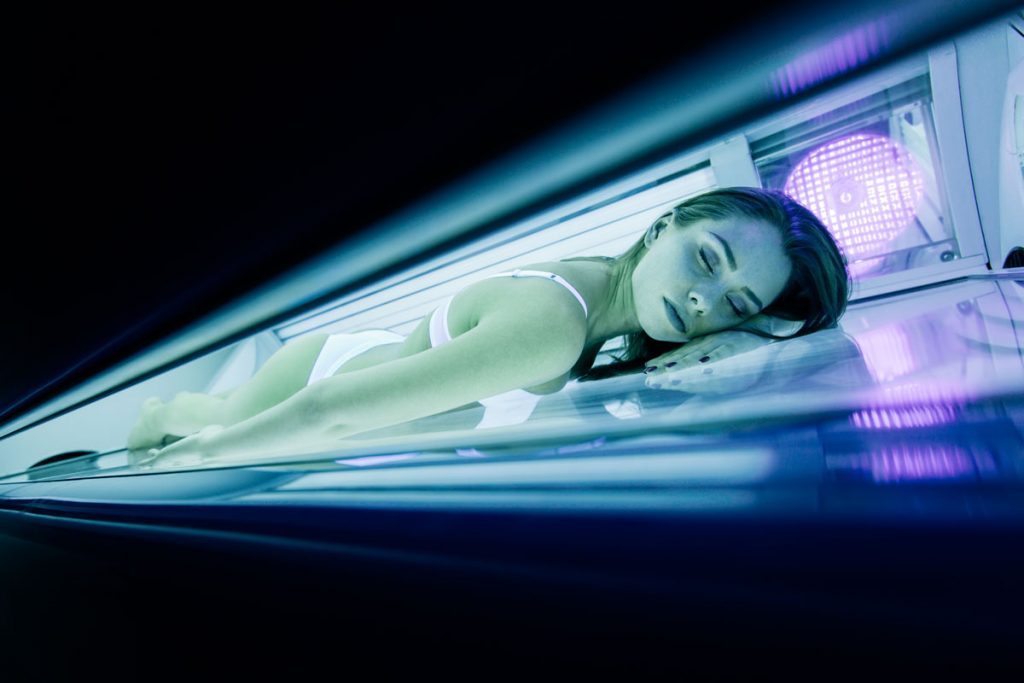
The tanning bed has had a long and fascinating history. As it turns out, the future of the tanning bed may prove to be just as interesting.
From a more positive public view of UV exposure to the progressive thinning of the ozone layer, a lot of factors will influence the way we used tanning beds in the future.
Here are three of our top predictions:
1. Public perception of UV exposure will become more balanced.
2. Tanning beds will continue to be used in the northern regions of the world.
3. Indoor tanning may be viewed as a safer alternative to natural sun exposure.
Ready to see the future? Let’s dig in.
1. Public Perception of UV Exposure Will Improve

In recent years, a countless number of studies have explored the harmful effects of UV exposure. Given that it used to be common to spend hours and hours in the sun without any form of protection, this is certainly not a bad thing.
The public’s collective concerns about UV exposure may not be entirely justified, though.
As Dr. Robert S. Stern said in a 2005 article published by Harvard Medical School, “Benefits of moderate sun exposure,” some people have developed a downright phobia of the sun. While being careful to avoid overexposure is important, there’s no need to avoid UV exposure altogether.
After all, brief, repeated exposure to sunlight can aid in the body’s production of vitamin D, according to a 2008 article published in the peer-reviewed journal Environmental Health Perspectives.
The article, “Benefits of Sunlight: A Bright Spot for Human Health,” goes on to explain that moderate sun exposure can also help with insomnia, seasonal affective disorder (SAD) and premenstrual syndrome, and can boost mood and energy levels.
2. Tanning Beds Will Always Be Well-Loved in the North

When looking at the future of the tanning bed you have to look to places up North. In northern regions like Alaska, Russia and Scandinavia, sunlight isn’t something to be taken for granted. For example, in the Alaskan town of Barrow (also known as Utqiagvik), residents must live without sunlight for 67 days each winter.
Knowing this, it’s easy to see why people in northern regions would appreciate the artificial sunlight provided by indoor tanning beds.
To get a better idea of just how popular tanning is in northern areas, let’s look at a 2019 study titled “Prevalence and determinants of sunbed use in thirty European countries: data from the Euromelanoma skin cancer prevention campaign,” published in the Journal of the European Academy of Dermatology and Venereology.
In the study, researchers found that tanning bed use tends to be most prevalent in sun-deprived countries. For example, in Norway, Denmark, Estonia and Latvia, the prevalence of tanning bed use exceeds 18 percent.
As long as it’s done in moderation, tanning bed use can provide people in sun-deprived areas with a healthy dose of vitamin D, as well as all the mood- and energy- boosting benefits mentioned above.
3. Indoor Tanning May Become Safer Than Natural Sunshine

However unlikely it may seem, it’s an undeniable possibility that natural sunshine will one day be more harmful than the light emitted from tanning beds.
Why? The thinning ozone layer is to blame. Here’s why.
In short, the ozone layer is a layer of the atmosphere that acts like sunscreen for the earth. As sunlight passes through the ozone layer, most harmful UVB wavelengths are filtered out.
Unfortunately, the ozone layer is not invincible, and it’s endured significant damage over time.
According to a 2018 study titled “Evidence for a continuous decline in lower stratospheric ozone offsetting ozone layer recovery” and published in the journal Atmospheric Chemistry and Physics, some of that damage is healing, but new damage is cropping up.
In the study, researchers learned that the ozone layer is beginning to heal over the North and South Poles.
However, it’s also thinning overpopulated areas, meaning that more people will be exposed to the sun’s harmful rays, which will only get more harmful if the ozone layer continues to diminish.
If the ozone layer continues to thin, particularly in overpopulated areas as it is now, there’s a definite possibility that tanning beds will one day be viewed as a safer alternative to natural sunshine.
Regardless of what the future of the tanning bed holds, though, it’s clear that tanning beds are and will be beloved by many, whether for health, relaxation or cosmetic reasons.
Want to make sure you get the most out of your home tanning bed while staying as safe as possible? Check out our previous article on tanning bed safety.







